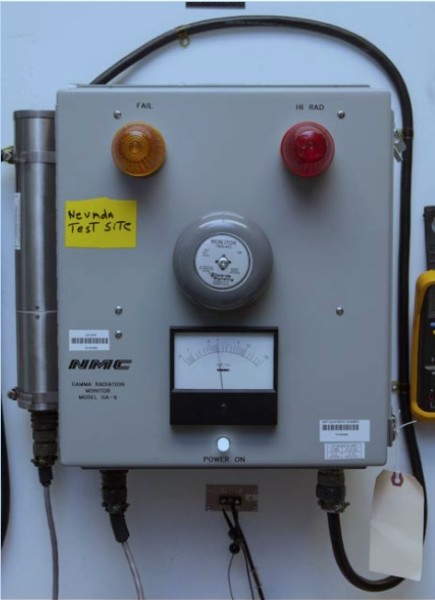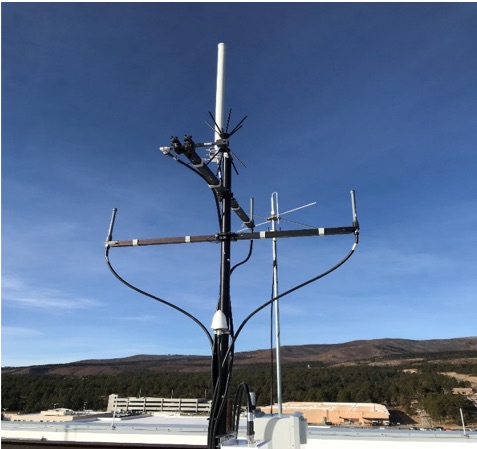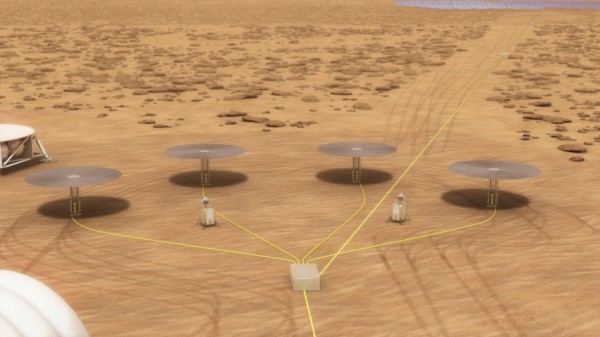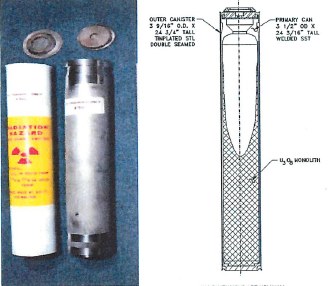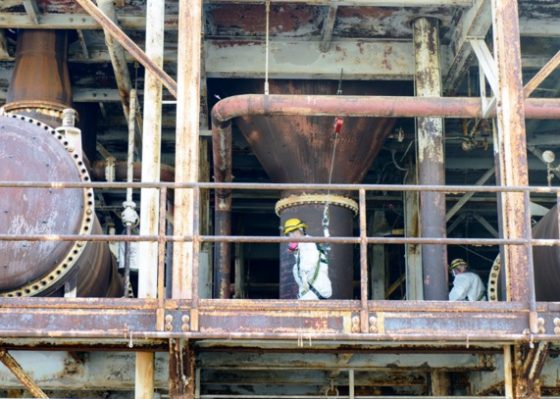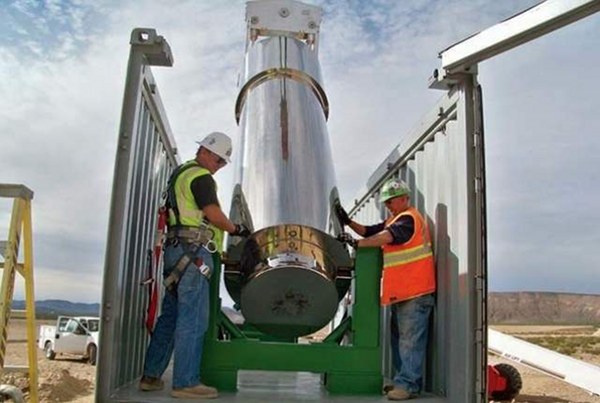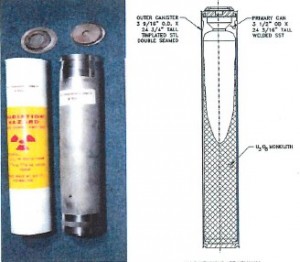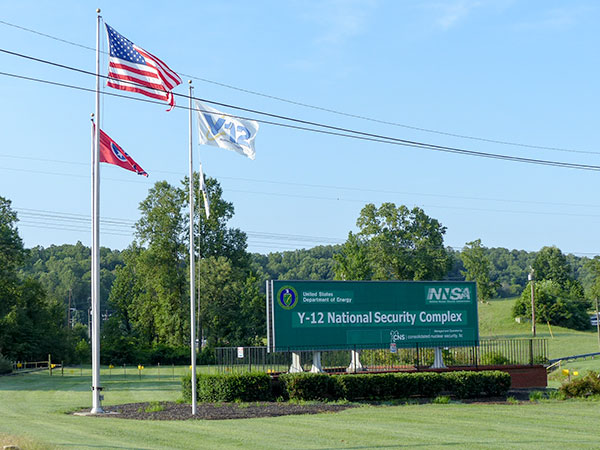
The sign at the main entrance to the Y-12 National Security Complex is pictured above on Sunday, Aug. 6, 2017. (File photo by John Huotari/Oak Ridge Today)
The waste shipped from the Y-12 National Security Complex that violated a solid waste permit in Nevada included small volumes of pressurized, non-flammable gases and an energetic material, but the shipments did not pose a safety risk, the U.S. Department of Energy said Thursday.
“These items were contained within a sealed, thick steel assembly that was disposed within a large metal box,” DOE said in response to questions. “Though the presence of these internal items were not known at the time of disposal, they do not pose any safety risk because the inner assembly is capable of containing any release of the small volumes of pressurized gases and the energetic material.”
The Department of Energy and the State of Nevada resolved regulatory actions related to the unauthorized shipments of the classified low-level radioactive waste in June. Oak Ridge Today reported about the settlement agreement on Wednesday, and the Nevada Division of Environmental Protection announced the agreement on Thursday. DOE also responded to questions about the shipments on Thursday, and the responses are included here.
At issue were 33 waste packages in 10 shipments from Y-12 to the Nevada National Security Site northwest of Las Vegas between January 2013 and December 2018. The shipments, which were quickly suspended, received publicity in July 2019 after Dan Brouillette, who was then deputy energy secretary, informed Nevada Governor Steve Sisolak about them. At the time, Nevada officials were already in a dispute with DOE about a half-ton of plutonium shipped to NNSS from the Savannah River Site in South Carolina.
The rest of this story, which you will read only on Oak Ridge Today, is available if you are a member: a subscriber, advertiser, or contributor to Oak Ridge Today.
Already a member? Great! Thank you! Sign in here.
Not a member? No problem! Subscribe here:
Basic
- Basic monthly subscription ($5 per month)—access premium content
- Basic annual subscription ($60 per year)—access premium content
Pro
- Pro monthly subscription ($10 per month)—access premium content, get breaking news emails first, and submit one press release or public service announcement per month
- Pro annual subscription ($100 per year)—save $20 per year, access premium content, get breaking news emails first, and submit one press release or public service announcement per month
Temporary
If you prefer to send a check, you may do so by mailing one to:
Oak Ridge Today
P.O. Box 6064
Oak Ridge, TN 37831
We also have advanced subscription options. You can see them here.
We also accept donations. You can donate here. A donation of $50 or more will make you eligible for a subscription.
Thank you for reading Oak Ridge Today. We appreciate your support!
